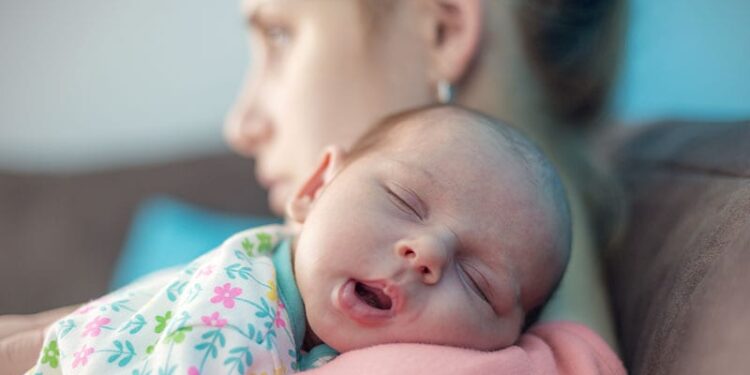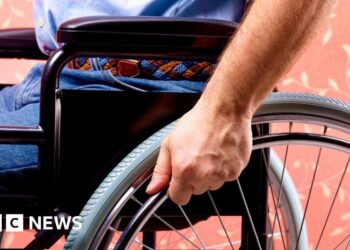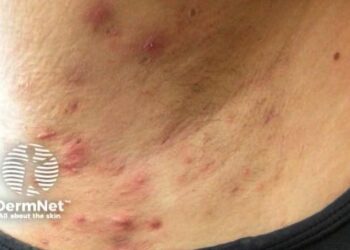LOS ANGELES — Researchers have developed and externally validated a simple, machine learning model that can help identify women at a high risk for postpartum depression (PPD) immediately after childbirth, even before they leave the hospital.
Untreated PPD is a significant contributor to maternal morbidity and mortality. It’s estimated to play a role in up to 10% of maternal deaths by suicide.
Earlier identification will improve the health of patients as they won’t have to wait to begin treatment for 6 or 8 weeks after delivery, when symptoms might become much more severe, lead investigator Mark A. Clapp, MD, maternal-fetal medicine specialist at Massachusetts General Hospital and assistant professor in the Department of Obstetrics and Gynecology, Harvard Medical School, both in Boston, told Medscape Medical News.
“It’s an opportunity for collaboration between obstetricians and psychiatrists to ensure high-risk patients are seen promptly,” said Clapp.
The findings were presented on May 19 at American Psychiatric Association (APA) 2025 Annual Meeting and simultaneously published online in The American Journal of Psychiatry.
A Common Problem
PPD, which can affect up to 15% of women after childbirth, is linked to an increased risk for suicide and self-harm. The condition has a profound impact on a woman’s physical and mental health, ability to function, and relationships with her newborn and family.
Until 2023, the American College of Obstetricians and Gynecologists (ACOG) recommended first PPD screening at the postpartum visit. ACOG now recommends screening at the initial prenatal visit, later in pregnancy, and at the postpartum visit. The Edinburgh Postnatal Depression Scale (EPDS) has traditionally been used to screen for the condition.
Clapp noted only an estimated 60% of women appear at their postpartum visit, “so about 4 in 10 patients are actually not presenting for postpartum care,” he said.
The study included 29,168 women (media age, 33 years; 70% White) with available EPDS scores and no recent history of a depressive disorder, who gave birth at two large academic hospitals (Brigham and Women’s Hospital and Massachusetts General Hospital), and six surrounding community-based hospitals sharing a common electronic health record (EHR) system.
A PPD risk stratification model based on EHRs of women having a baby in a hospital makes sense given the widespread use of EHRs in healthcare facilities, where over 98% of pregnant women deliver, said Clapp.
Researchers divided participants into a model development group (15,018 participants delivering at five hospitals) and a model validation group (14,150 participants delivering at three hospitals).
All information for the model was readily available through EHRs, including maternal medical history, medication use, pregnancy history, and demographic factors. Researchers also incorporated other factors known or hypothesized to influence the risk for PPD such as maternal age; education level; marital status; primary language; public or private insurance; and pregnancy factors such as gestational age, mode of delivery, number of prenatal visits, and length of hospital stay.
The primary outcome was PPD, defined as the presence of a mood disorder, an antidepressant prescription, or a positive screen on the EPDS (score ≥ 13) within 6 months of delivery.
For both the training and testing sets, researchers assessed model discrimination by the area under the receiver operating characteristic curve (AUROC), as well as positive predictive value (PPV) and negative predictive value (NPV) using a screen-positive threshold and a set specificity of 90%.
High Specificity
Of the total number of participants, 9.2% met at least one criterion for PPD within 6 months of delivering their baby. Top factors contributing to the risk for PPD included anxiety/fear-related disorders, antiemetic use, headache disorders, gastrointestinal disorders, and prenatal EPDS score.
For the primary model, the AUROC was 0.750 (95% CI, 0.721-0.778), indicating the model had good discrimination. The Brier score was 0.073 (95% CI, 0.067-0.080), indicating the model was well calibrated. At the set threshold of 90% specificity, the PPV was 24.4% (95% CI, 21.3%-27.6%) and the NPV was 94.7% (95% CI, 93.9%-95.5%).
In the external validity cohort, the AUROC was 0.721 (95% CI, 0.709-0.736) and the Brier score was 0.087 (95% CI, 0.083-0.091). At a specificity of 90%, the PPV was 28.8% (95% CI, 26.7%-30.8%) and the NPV was 92.2% (95% CI, 91.8%-92.7%).
“Using the predefined specificity, we were able to identify about 30% of individuals who were predicted to be at high risk where the diagnosis of postpartum depression occurred,” said Clapp. “Remember, the overall population risk was about 10%, but of those that we flagged as high risk, the rate of postpartum depression was 30% — or three times the population rate.”
In addition to distinguishing between higher- and lower-risk populations, the model performed similarly across patient subgroups by race, ethnicity, age, and hospital type, suggesting the model could be applied equitably in diverse populations, said Clapp.
The researchers hope to pair the model with tailored interventions, which in some cases could merely involve a phone call during the postpartum period, said Clapp.
“People at high risk for postpartum depression benefit from a simple phone call, so having a nurse or doctor call them to say, ‘Hey, how are you doing?’” can make a big difference, he noted.
A limitation of the study is that it only reflects practice patterns in eastern Massachusetts and southern New Hampshire in a single health system. Other limitations were that most patients were White, college-educated, and privately insured, and misclassification may have occurred, as is the case with any study using diagnostic codes.
“We’re working to integrate this model into our electronic health record to facilitate real-time predictions” of high PPD risk, said Clapp. The team is also investigating how the model can be used to reduce the incidence, severity, and consequences of PPD.
Clinically Important Tool
Commenting for Medscape Medical News, reproductive psychiatrist Misty Richards, MD, associate clinical professor, Department of Psychiatry and OB-GYN, University of California at Los Angeles, noted that PPD is the most common complication of childbirth, highlighting the need for better diagnostics.
“We’re talking about 1 in 5 women”, many of whom, especially those with no history of depression, “don’t tend to get diagnosed,” said Richards, who was not part of the research.
“We try to catch people with postpartum depression before it becomes a forest fire” but “oftentimes we miss it,” she said. “Having predictive tools like thisis very, very important clinically, so we can catch things early.”
Only one medication — zuranolone, a GABAA receptor–positive allosteric modulator — is approved by the US Food and Drug Administration for PPD, said Richards.
Ned Kalin, MD, professor and chair, Department of Psychiatry, and director of the HealthEmotions Research Institute, University of Wisconsin School of Medicine and Public Health, Madison, Wisconsin, who was not part of the study, highlighted in a press briefing that patients in the study who developed PPD didn’t have a history of depression.
“These are people that otherwise would probably go completely undetected, so this is really a critical advance in that regard.”
The study was funded by the National Institute of Mental Health, the National Institute of Child Health and Human Development, and the Simons Foundation. Clapp reported being a scientific advisory board member for and holding equity in Delfina Care. No other conflicts of interest were disclosed.
Source link : https://www.medscape.com/viewarticle/new-tool-identifies-women-high-risk-postpartum-depression-2025a1000ctu?src=rss
Author :
Publish date : 2025-05-21 12:14:00
Copyright for syndicated content belongs to the linked Source.














